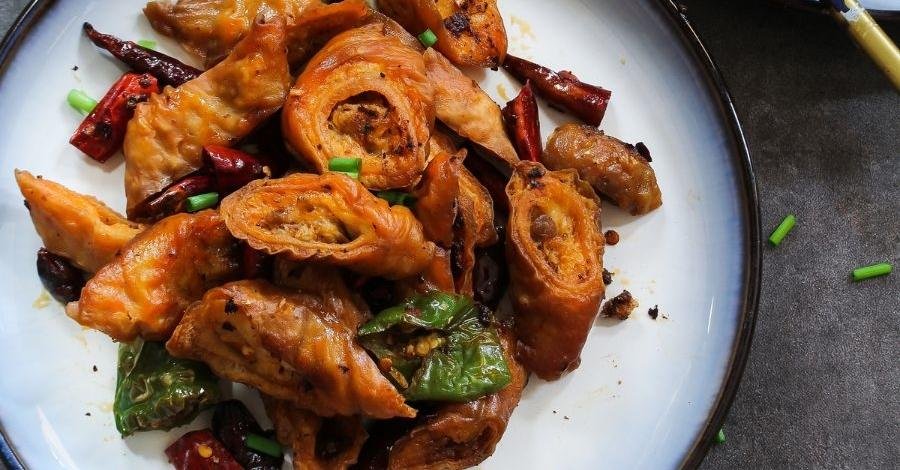Are you curious to know what is pork bungs? You have come to the right place as I am going to tell you everything about pork bungs in a very simple explanation. Without further discussion let’s begin to know what is pork bungs?
When it comes to culinary exploration, the world of food is filled with surprises, and one such surprise is the intriguing ingredient known as “pork bungs.” While not a commonly discussed or widely recognized element in the culinary world, pork bungs have a unique place in certain culinary traditions and offer an interesting glimpse into the art of using every part of an animal for nourishment. In this blog, we’ll delve into what pork bungs are, their culinary applications, and their historical significance.
What Is Pork Bungs?
Pork bungs, often referred to as “bung casings,” are the edible, tubular part of the pig’s digestive system, specifically the section that comprises the large intestine and the rectum. These casings are meticulously cleaned, processed, and prepared for culinary use. The term “bung” itself refers to the rear end or posterior portion of an animal’s digestive tract.
Culinary Applications Of Pork Bungs:
Pork bungs, though not a mainstream ingredient, are utilized in various culinary traditions and dishes around the world:
- Sausage Casings: One of the primary uses of pork bungs is as natural sausage casings. The thin, flexible, and edible nature of these casings makes them ideal for encasing ground meat mixtures, creating sausages of various sizes and styles.
- Haggis: In Scottish cuisine, haggis is a famous dish made from minced sheep’s heart, liver, and lungs mixed with oatmeal and spices. Pork bungs are traditionally used to encase the haggis mixture, creating a distinctive sausage-like shape.
- Faggots: In the UK, particularly in Wales and the Midlands, “faggots” are a type of savory meatball or meatball-like dish made from minced or ground offal, including pork liver and pork bungs. These are often served with a rich gravy.
- Blood Sausage: In some cultures, pork bungs are used to encase blood sausage, a dish made from blood and other ingredients.
Historical Significance:
The use of pork bungs in traditional dishes reflects historical practices where communities aimed to utilize every part of an animal to minimize waste and ensure sustenance. This resourcefulness was particularly valuable in times when food was scarce, and people relied on every edible component of an animal to feed themselves and their families.
Safety And Preparation:
Pork bungs used in culinary applications are typically thoroughly cleaned and processed to ensure they meet food safety standards. Professional butchers and chefs take care to prepare and handle them with utmost hygiene.
A Niche Culinary Experience:
While pork bungs may not be a staple in every kitchen, they offer a unique culinary experience for those willing to explore less common ingredients. Their use in traditional dishes adds depth and authenticity to regional cuisines, and for some, they represent a connection to culinary heritage and the practice of resourceful cooking.
Conclusion:
Pork bungs, with their role in traditional dishes and historical significance, exemplify the rich tapestry of global culinary traditions. They remind us that food culture is diverse and often rooted in resourcefulness and the utilization of every available ingredient. While not an ingredient for everyone, pork bungs have found their place in certain culinary traditions, enriching the world of gastronomy with their unique qualities and contributions to beloved dishes.
You can gather more information on different topics by visiting Ofadvantages.
FAQ
Is Pork Intestine Safe To Eat?
Chitlins, which are pork intestines and sometimes called chitterlings, can be contaminated with Yersinia enterocolitica and other harmful germs that can make you sick. That’s why you should take precautions when you’re making chitlins or another dish that uses pork intestines – or any time you handle raw pork.
What Is Pork Intestine Called?
Chitlins (or chitterlings, as they’re also called) are cooked pig intestines. While the vast majority of chitlins are pork, sometimes intestines from other animals (particularly cows) are sometimes used. They’re typically boiled, fried, or stuffed with mincemeat and served as just one part of a larger meal.
How To Fry Pork Intestine?
Cut the intestines crosswise into small pieces. Rub the remaining salt all over these and let it stay for 5 minutes. Heat the oil in a large pot. Once the oil gets hot, deep-fry the intestines until crispy.
Are Pig Intestines Unhealthy?
Yersinia enterocolitica is a bacterium found in the intestine of hogs that can cause diarrheal illness in humans. Infections caused by these bacteria are called yersiniosis. Swine and meat products from swine are the primary source of illness from Yersinia in humans.
I Have Covered All The Following Queries And Topics In The Above Article
Chinese Pork Intestine Recipe
Pork Intestine In Chinese
Szechuan Pork Intestine Recipe
Pork Stomach
Pork Intestine Dish
Pork Intestine Korean Recipe
What Is Pork Bungs
What is pork Bung?
